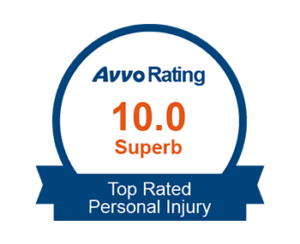Pedestrian accidents can have life-changing effects. When a person walking down the street is hit by a car, the injuries are often severe. In some cases, these injuries can leave lasting scars, both physical and emotional. While the immediate aftermath of an accident might focus on medical care, there is often another type of harm that is harder to measure. This harm is called “pain and suffering.” It refers to the emotional, mental, and physical distress that a person goes through after being hurt in an accident. Pain and suffering damages are a crucial part of pedestrian accident claims, and understanding how they work can help injured victims seek fair compensation for the hardships they endure.
When a pedestrian is involved in an accident, the impact is usually much greater than just the physical injuries. Pedestrians are completely unprotected, making them vulnerable to the full force of a collision. As a result, injuries tend to be serious, and the recovery process can be long and painful. The damages in these cases go beyond just the medical expenses, as the victim’s quality of life is often significantly affected. They may experience ongoing pain, emotional distress, and a diminished ability to enjoy daily activities. These damages, known as non-economic damages, are often harder to calculate, but they are just as important as the financial losses like medical bills and lost wages. At, The Nicotra Law Firm, PC , we are here to guide you through the legal process and help you navigate the complexities of your case.
What is Pain and Suffering?
Pain and suffering refers to the physical and emotional distress that a person experiences after being injured. Physical pain can include everything from broken bones, muscle strains, and internal injuries to ongoing discomfort and chronic pain that may last for years after the accident. Emotional suffering, on the other hand, involves the psychological effects of the accident. This can include anxiety, depression, fear, and even post-traumatic stress disorder. It is important to understand that pain and suffering are not limited to the time immediately after the accident. These damages can continue for months or even years, affecting the victim’s overall well-being and mental health.
When a pedestrian is injured in an accident, the pain and suffering they experience can often be worse than the financial impact. While medical bills and lost wages are easy to measure, the emotional toll of the accident can be overwhelming. Many victims experience a loss of enjoyment in their lives. Activities they once enjoyed may now be too painful or emotionally distressing to continue. Simple tasks like walking or even sitting comfortably may become difficult or impossible. The emotional distress caused by the accident can also affect relationships, making it harder for the victim to interact with their loved ones or maintain a positive outlook on life.
How Are Pain and Suffering Damages Calculated?
Unlike medical bills and property damage, there is no set formula for calculating pain and suffering damages. This makes it one of the more complex parts of a pedestrian accident claim. The amount of compensation a person can receive for pain and suffering will depend on several factors. The severity of the injury is one of the main factors, as more serious injuries tend to result in greater levels of pain and emotional distress. The length of recovery time and the overall impact on the victim’s daily life will also play a role in determining the amount of compensation.
Courts and insurance companies typically use two main methods to calculate pain and suffering damages. The first is the multiplier method. In this approach, the victim’s economic damages, like medical bills and lost wages, are multiplied by a number, usually between one and five. The more severe the injury, the higher the multiplier. The second method is the per diem method, where a specific dollar amount is assigned to each day of suffering, and this amount is multiplied by the number of days the victim has been in pain. Both methods are subjective, and the final amount will depend on the circumstances of the case.
Why Are Pain and Suffering Damages Important?
Pain and suffering damages are essential because they provide compensation for the non-economic losses that an accident victim endures. These damages recognize that the emotional and physical suffering caused by an accident can be just as devastating as the financial losses. Compensation for pain and suffering is designed to help the victim recover a sense of normalcy and regain their quality of life. While no amount of money can fully erase the trauma of a serious accident, pain and suffering damages can provide some measure of relief by addressing the long-term impact of the injury.
For many victims of pedestrian accidents, pain and suffering damages make up a significant portion of their claim. These damages can cover not only the physical pain but also the emotional toll of the accident. Victims may experience anxiety, depression, and other mental health challenges as a result of the trauma they endured. Compensation for pain and suffering is meant to address these ongoing struggles and help the victim find a path toward healing. It can also help to compensate for the loss of enjoyment in life, as victims may no longer be able to participate in the activities they once loved due to their injuries.
Challenges in Proving Pain and Suffering
Proving pain and suffering in a pedestrian accident claim can be challenging. Unlike medical bills, which provide a clear record of expenses, pain and suffering is much harder to quantify. It is often up to the victim to provide evidence of the emotional and physical distress they have experienced. This can be done through medical records, testimony from friends and family, and documentation of the victim’s daily struggles. In some cases, testimony from mental health professionals may be required to establish the extent of the emotional suffering.
Victims can strengthen their claim for pain and suffering damages by keeping a detailed journal of their recovery process. This journal can document the pain they experience on a daily basis, the emotional challenges they face, and the ways in which their injury has affected their life. By providing a clear and detailed account of their suffering, victims can make a stronger case for fair compensation. However, because pain and suffering is subjective, it is often one of the most contested parts of a pedestrian accident claim. Insurance companies may try to minimize the impact of the injury, making it important for victims to have strong legal representation.
Related Videos
How should I choose a personal injury attorney for my claim?
Insurance companies dirty tricks
The Role of a Lawyer in Pain and Suffering Claims
Having an experienced personal injury attorney on your side is crucial when seeking pain and suffering damages in a pedestrian accident claim. Lawyers understand the complexities involved in calculating and proving these damages and can help ensure that the victim receives fair compensation. They can gather the necessary evidence, work with medical professionals, and present a strong case on behalf of the victim. Because pain and suffering damages are subjective, having a skilled attorney who can effectively advocate for the victim’s rights is essential.
Lawyers also play a key role in negotiating with insurance companies. Insurance adjusters often try to downplay the severity of pain and suffering in order to reduce the amount of compensation. An attorney can counter these tactics by presenting a compelling case that highlights the full extent of the victim’s suffering. They can also help victims avoid common mistakes that might hurt their claim, such as settling too quickly for less than they deserve. With the help of a knowledgeable attorney, victims of pedestrian accidents can pursue the compensation they need to move forward with their lives.
In pedestrian accident claims, pain and suffering damages are a vital part of the compensation that victims can receive. These damages address the emotional and physical toll that an accident can have on a person’s life. From chronic pain to emotional trauma, the impact of a pedestrian accident can be far-reaching. Understanding how pain and suffering damages work is important for victims who want to seek fair compensation for their injuries. While these damages can be challenging to prove, they are essential in helping victims rebuild their lives after a serious accident.
If you or a loved one has been injured in a pedestrian accident and are struggling with pain and suffering, it is important to seek legal help. The Nicotra Law Firm, PC can guide you through the process and fight for the compensation you deserve. Our team is dedicated to helping accident victims recover from their injuries and get back to living their lives. Contact us today for a consultation to discuss your case and learn more about your legal options.








